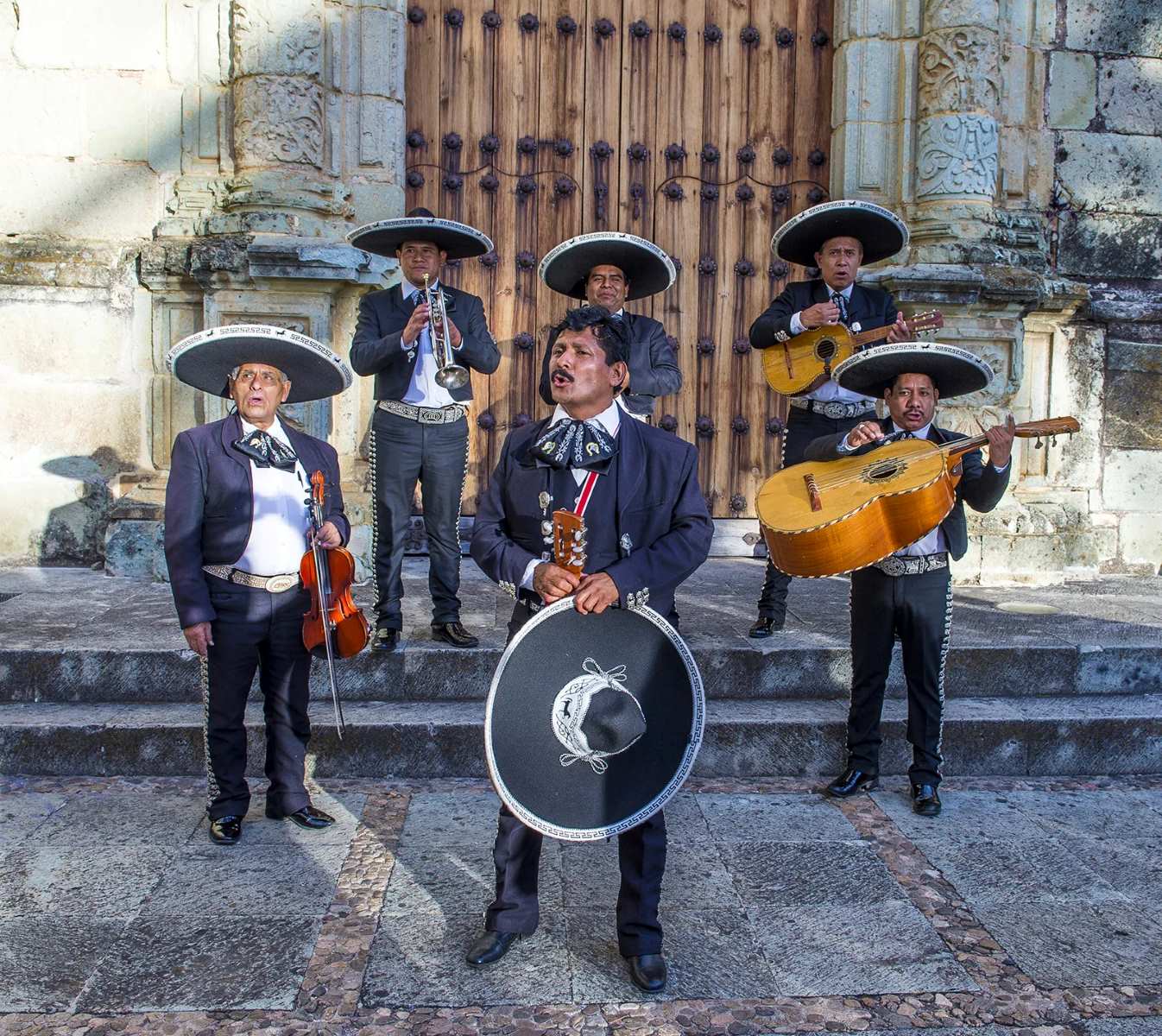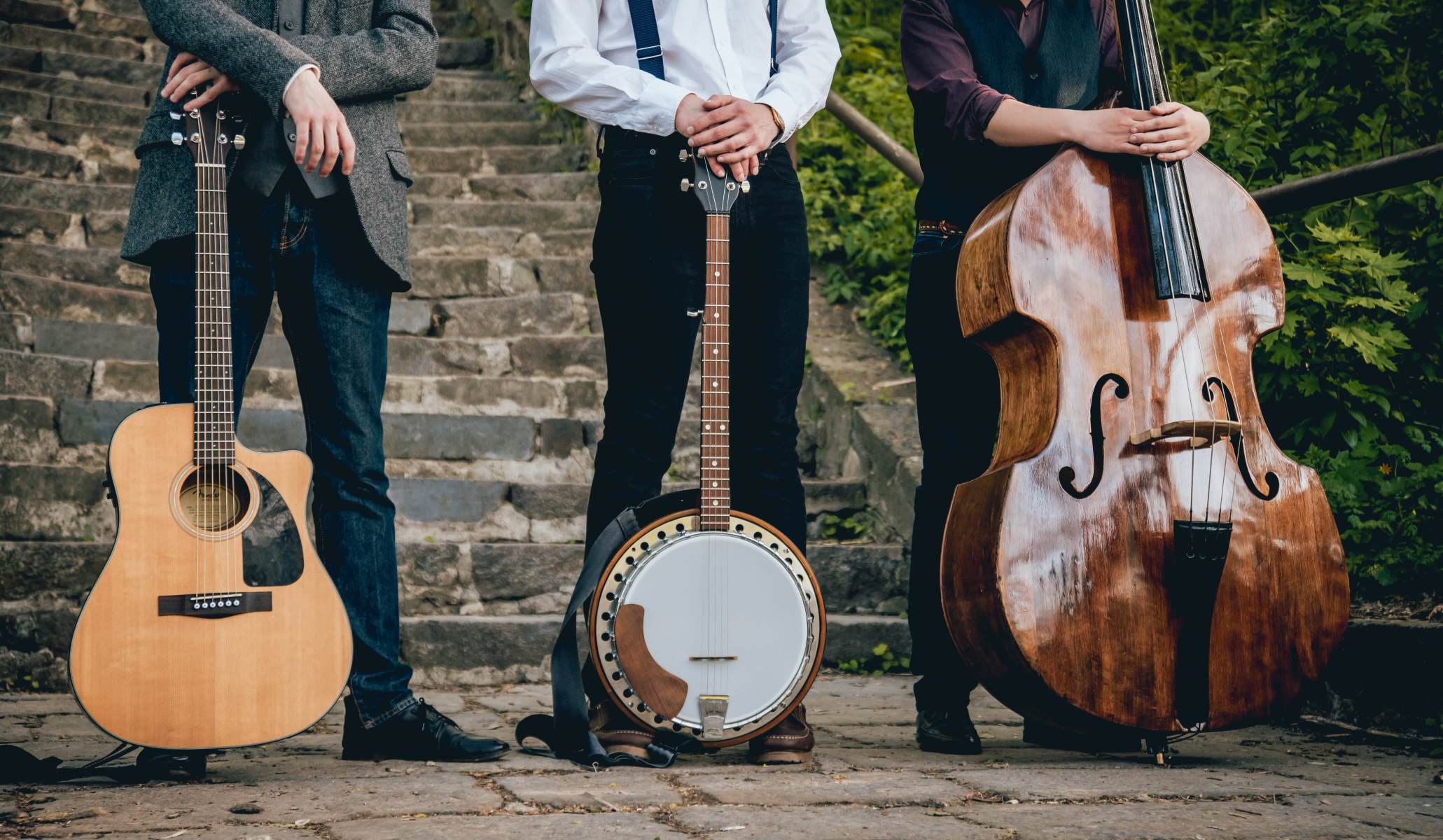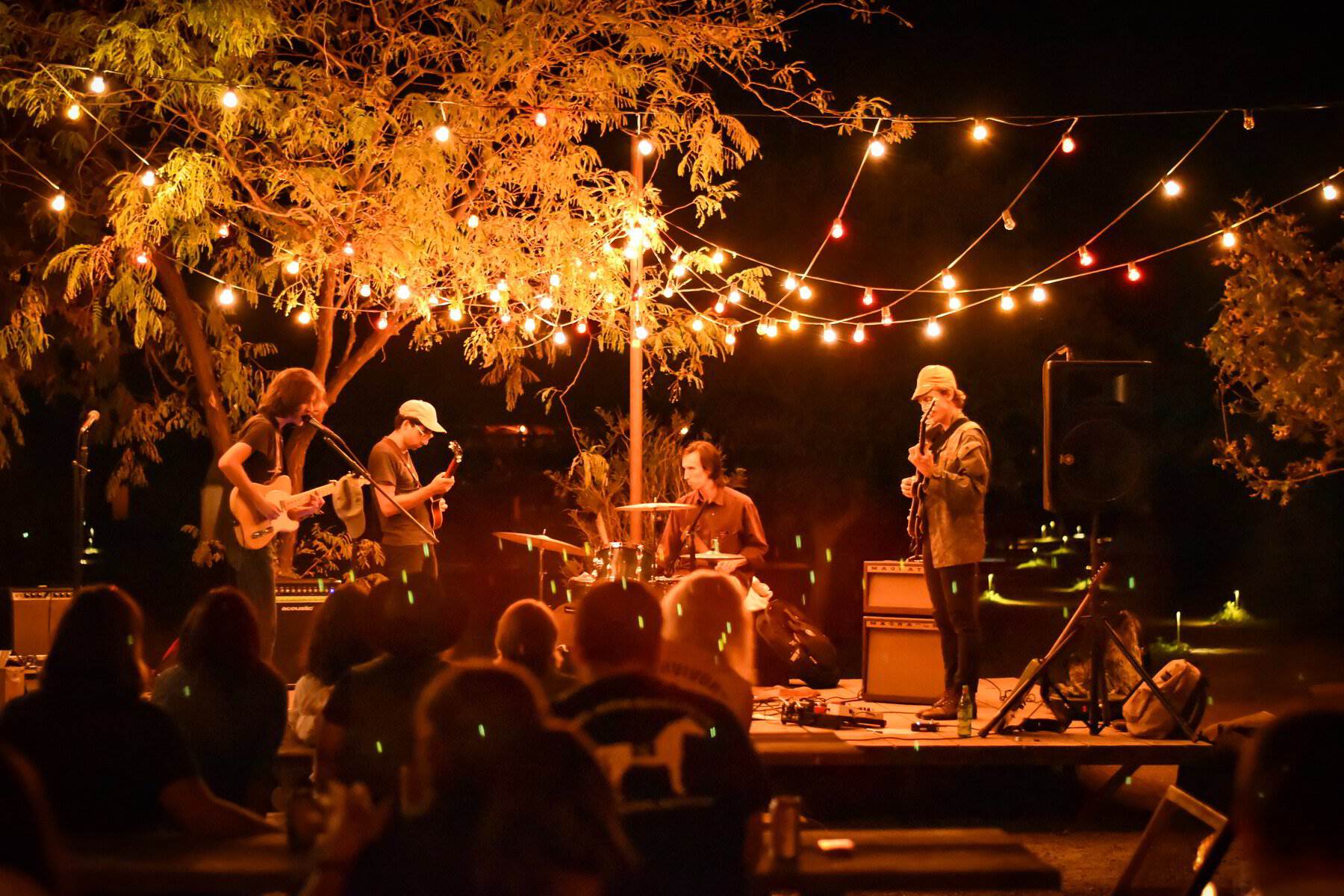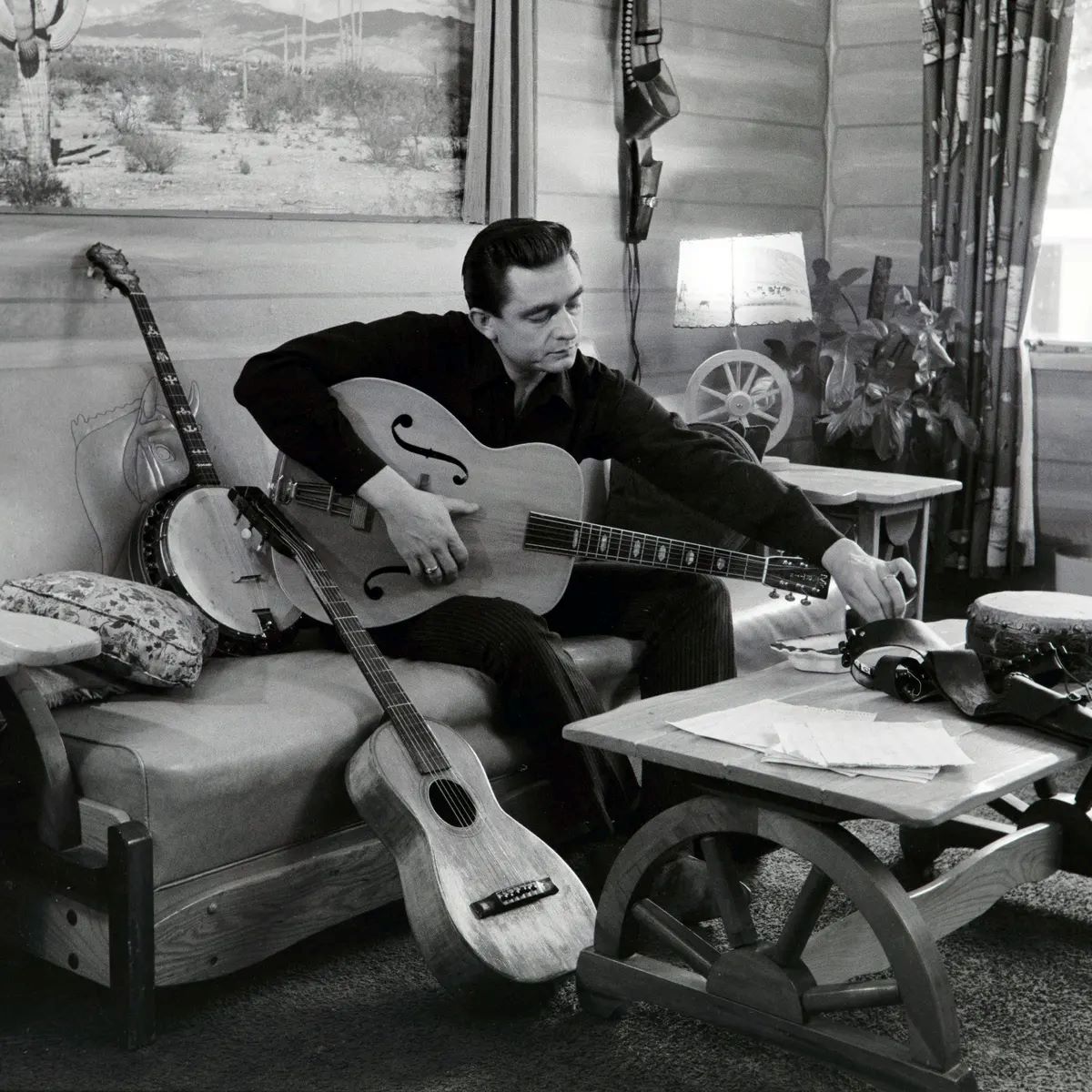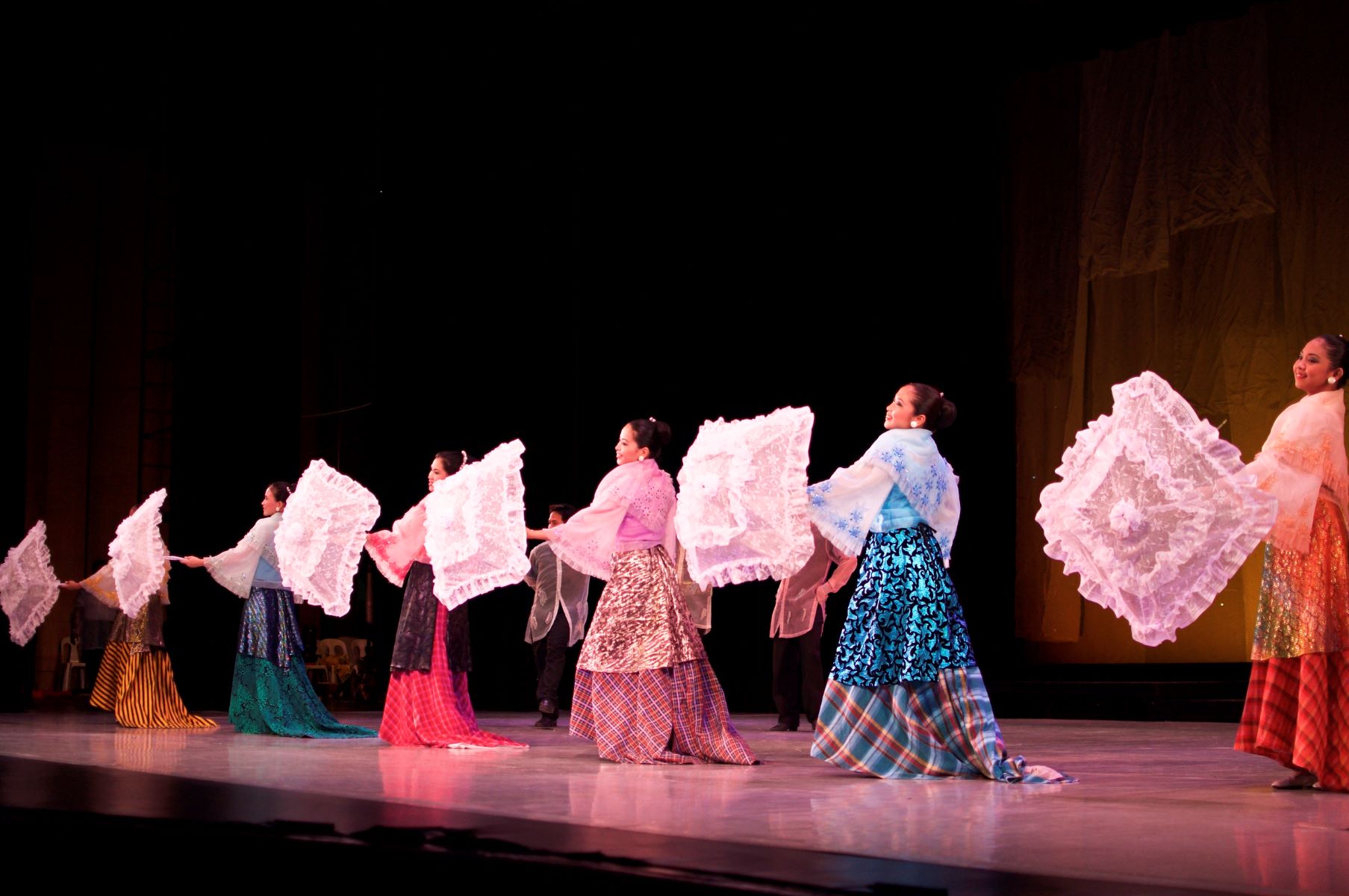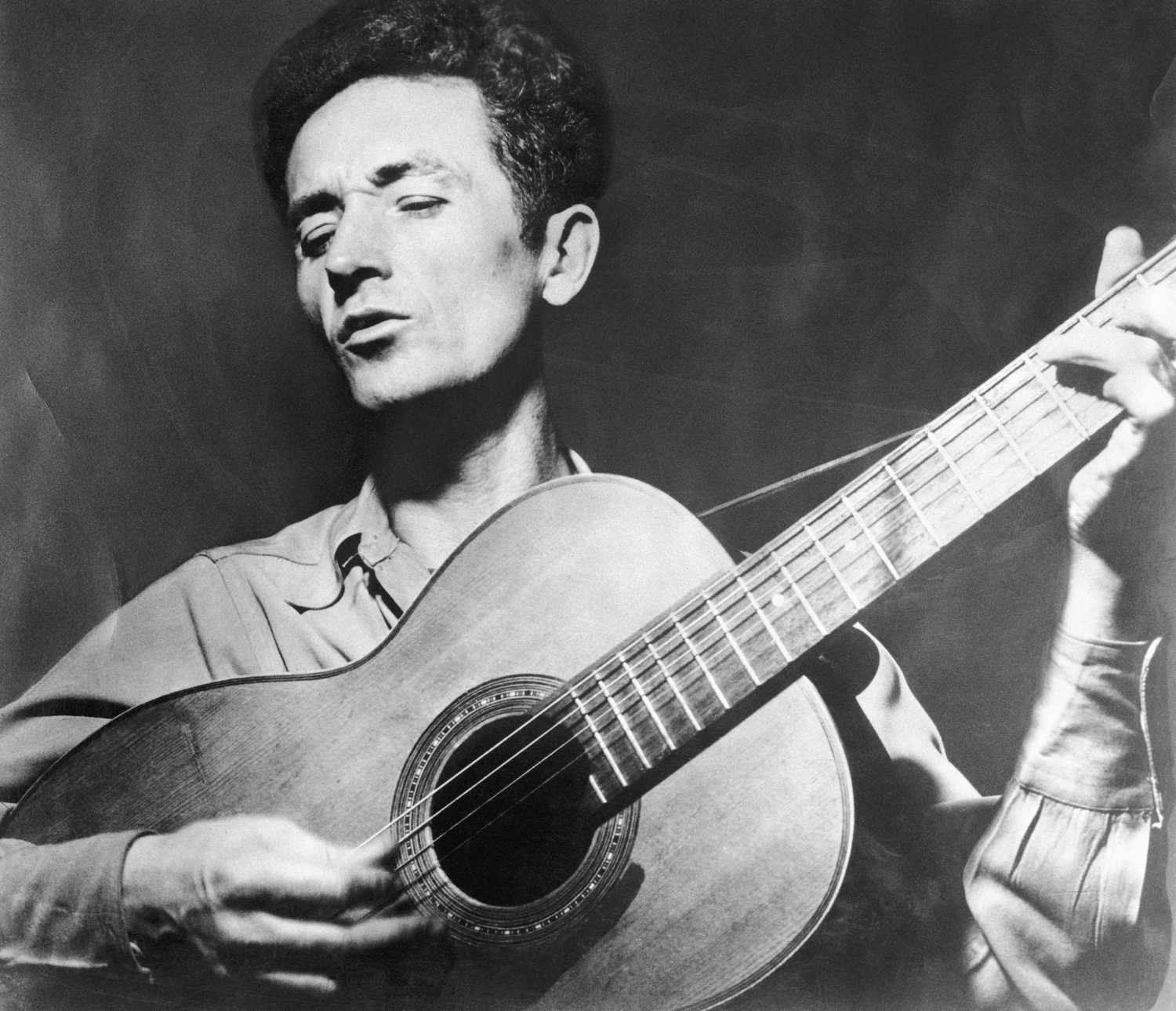

Folk
What Is Indie Folk Music
Modified: January 22, 2024
Discover the captivating world of indie folk music and explore its unique blend of folk traditions with contemporary sounds. Uncover the essence of folk through its soulful melodies, heartfelt lyrics, and timeless storytelling.
(Many of the links in this article redirect to a specific reviewed product. Your purchase of these products through affiliate links helps to generate commission for AudioLover.com, at no extra cost. Learn more)
Table of Contents
Introduction
Indie folk music is a genre that has captivated listeners with its introspective lyrics, acoustic sounds, and heartfelt melodies. It is a subgenre of folk music that emerged in the late 20th century, characterized by its independent and alternative approach to traditional folk music. With a focus on authenticity and raw emotion, indie folk music has gained a loyal following and continues to thrive in the music industry.
Indie folk music draws inspiration from its folk roots while embracing experimentation and artistic freedom. It often features stripped-down instrumentation, including acoustic guitars, banjos, and mandolins, creating an intimate and organic sound. The lyrics tend to explore personal experiences, nature, and introspection, often reflecting on themes of love, loss, and self-discovery.
What sets indie folk music apart is its independent spirit. Unlike mainstream folk music, indie folk artists are often unsigned or signed to small independent labels, allowing them to maintain creative control and artistic integrity. This DIY approach enables indie folk musicians to create music that speaks directly to their audience, free from the constraints of commercial trends and expectations.
Indie folk music has gained popularity through the rise of digital platforms and the internet. It has provided a platform for independent artists to share their music directly with fans, transcending geographical boundaries and reaching a global audience. In recent years, popular streaming platforms and online communities have further facilitated the growth of indie folk music and allowed emerging artists to connect with their listeners.
While indie folk music is often associated with a niche audience, it has garnered critical acclaim and mainstream recognition. Its authenticity and emotive qualities appeal to listeners who seek music that resonates on a deeper level. In addition, indie folk music has inspired other genres and has influenced contemporary songwriting. Artists from various backgrounds have incorporated elements of indie folk into their music, blurring genre boundaries and creating a diverse musical landscape.
In this article, we will delve into the rich history, defining characteristics, and notable artists and albums within the indie folk music genre. Join us as we explore the mesmerizing world of indie folk music and uncover its enduring appeal.
Definition of Indie Folk Music
Indie folk music is a genre that defies precise definition, as it encompasses a wide range of styles and sounds. At its core, indie folk refers to folk music that is produced independently or released through independent record labels. It embodies a sense of non-conformity and artistic freedom, often characterized by its raw and intimate nature.
Indie folk music is known for its stripped-down instrumentation and organic sound. Acoustic guitars, banjos, mandolins, and other folk instruments are common in indie folk compositions. The emphasis is on simplicity, allowing the lyrics and melodies to take center stage. The use of harmonies and subtle arrangements adds depth and texture to the music.
Lyrically, indie folk songs delve into personal experiences, introspection, and contemplation of life’s complexities. They often tackle themes of love, loss, nature, and self-discovery. The lyrics are crafted with poetic sensitivity, conveying profound emotions and inviting listeners to relate on a deep level.
What distinguishes indie folk from mainstream folk is its association with independent musicians who have chosen to forge their own path. Independent artists in the indie folk genre prioritize artistic authenticity, often favoring a DIY approach to music production. By avoiding major record labels, they can maintain creative control and pursue their unique vision.
Indie folk music has gained recognition for its alternative and non-commercial nature. It provides a platform for artists to channel their creativity without the constraints of mainstream trends and expectations. This allows for a diverse range of voices and styles within the genre, fostering a sense of individuality and artistic expression.
While indie folk music remains rooted in folk traditions, it has also evolved and incorporated elements from other genres. It may blend with indie rock, alternative, or even pop influences, resulting in a fusion of sounds. This versatility has contributed to its enduring popularity, attracting listeners from various musical backgrounds.
In summary, indie folk music is a genre that embraces independence, authenticity, and artistic freedom. Its acoustic simplicity, introspective lyrics, and DIY ethos make it a captivating genre that resonates with a growing audience. Through its unique blend of tradition and innovation, indie folk music continues to captivate listeners and inspire a new generation of artists.
Origins and History of Indie Folk Music
Indie folk music has its roots in the folk revival of the 1960s and 1970s, when artists like Bob Dylan, Joni Mitchell, and Leonard Cohen brought a new wave of introspective songwriting to the forefront of popular music. As the decades progressed, a new generation of independent musicians emerged, fusing the traditional folk sound with their own unique musical sensibilities.
The term “indie” itself refers to independent music, signifying the artists’ desire to create and distribute their music outside of the traditional mainstream music industry. In the 1990s, the indie folk movement gained momentum, supported by the rise of independent record labels and the accessibility of affordable recording technology.
Indie folk music was influenced by the burgeoning alternative music scene of the time, incorporating elements of indie rock and lo-fi aesthetics. Artists like Elliott Smith, Sufjan Stevens, and Iron & Wine emerged as leading figures, known for their acoustic-driven soundscapes and deeply introspective lyrics.
The early 2000s saw a mainstream resurgence of folk-inspired music, with bands like Mumford & Sons and Fleet Foxes bringing indie folk into the spotlight. Their success paved the way for a new wave of indie folk artists, who continued to explore the genre’s introspective and organic qualities.
Throughout its history, indie folk music has been shaped by a diverse range of artists, each contributing their unique perspective to the genre. From the poetic storytelling of Laura Marling to the ethereal harmonies of The Staves, indie folk has evolved and diversified, embracing new sounds and ideas along the way.
Today, indie folk music continues to thrive, with artists pushing the boundaries of the genre and creating innovative music that resonates with a broad audience. The genre’s independent spirit and commitment to artistic integrity has allowed it to maintain its authenticity and charm, drawing in new listeners and forging connections with fans through the power of storytelling.
As indie folk music continues to evolve, it remains a vital part of the contemporary music landscape. With its introspective lyrics, heartfelt melodies, and intimate acoustic sound, indie folk provides a space for artists to express their innermost thoughts and emotions, captivating listeners and creating a sense of solidarity amongst its audience.
Characteristics of Indie Folk Music
Indie folk music is characterized by several distinct features that set it apart from other genres. These characteristics contribute to the genre’s intimate and introspective nature, creating a unique sonic experience for listeners.
1. Acoustic Instrumentation: Indie folk music relies heavily on acoustic instrumentation, often featuring acoustic guitars, banjos, mandolins, and other traditional folk instruments. This stripped-down approach lends a raw and organic quality to the music, allowing the lyrics and melodies to take center stage.
2. Introspective Lyrics: Indie folk songs typically explore personal experiences, emotions, and introspection. The lyrics delve into themes of love, loss, self-discovery, and nature, inviting listeners to reflect on their own lives and emotions. The poetic and heartfelt nature of the lyrics creates a profound connection between the artist and the audience.
3. Emotive Melodies: Indie folk melodies often evoke a sense of melancholy, nostalgia, or bittersweet emotions. The melodies are crafted with care, blending simplicity and complexity to create a captivating and memorable sonic experience. These melodies draw listeners in, allowing them to immerse themselves in the emotional journey of the song.
4. Harmonies and Vocal Layering: Indie folk music often features intricate vocal harmonies and layering. Artists will harmonize and layer their voices, creating lush and ethereal soundscapes. This technique adds depth and richness to the music, enhancing the emotional impact of the lyrics.
5. DIY Ethos: Indie folk musicians embrace a DIY (Do-It-Yourself) approach to their music. They often produce their own albums, self-release their music, and manage their own careers. This independence allows them to maintain creative control and authenticity, free from the pressures and constraints of the mainstream music industry.
6. Non-Conformity: Indie folk music is characterized by its non-conformist attitude towards mainstream trends. Artists within the genre often prioritize artistic integrity over commercial success, allowing them to create music that is honest and true to their vision. This non-conformity has led to a diverse and vibrant indie folk community, where artists can freely express themselves.
7. Fusion of Genres: Indie folk music is not limited to traditional folk sounds. It often incorporates elements from other genres, such as indie rock, alternative, and even pop influences. This fusion of genres adds a unique and modern twist to the traditional folk sound, appealing to a wider audience and pushing the boundaries of the genre.
Overall, indie folk music is characterized by its acoustic instrumentation, introspective lyrics, emotive melodies, vocal harmonies, DIY approach, non-conformity, and genre fusion. These characteristics combine to create a captivating and authentic musical experience that resonates with listeners who appreciate the raw beauty of folk-inspired storytelling.
Influential Indie Folk Artists
Over the years, numerous indie folk artists have left an indelible mark on the genre, shaping its sound and inspiring future generations of musicians. Their innovative approaches, heartfelt lyrics, and captivating performances have solidified their place as influential figures in the indie folk music scene.
1. Bon Iver: Known for his ethereal and atmospheric soundscapes, Justin Vernon, the man behind Bon Iver, gained widespread recognition with his debut album “For Emma, Forever Ago.” His distinct falsetto vocals and introspective lyrics have made him a key figure in the indie folk genre, influencing countless artists with his unique style.
2. Laura Marling: With her soulful voice and introspective songwriting, Laura Marling has established herself as one of the most talented singer-songwriters in the indie folk music scene. Her albums, such as “I Speak Because I Can,” showcase her poetic lyricism and masterful guitar playing, earning her critical acclaim and a devoted fanbase.
3. Fleet Foxes: Known for their rich harmonies and lush arrangements, Fleet Foxes have made a significant impact on the indie folk scene. Their self-titled debut album, with songs like “White Winter Hymnal,” showcased their distinctive folk sound and intricate vocal layering, drawing comparisons to classic folk acts like Crosby, Stills, Nash & Young.
4. Sufjan Stevens: Renowned for his experimental yet intimate approach to music, Sufjan Stevens has pushed the boundaries of indie folk with his genre-defying albums. His highly acclaimed releases, including “Illinois” and “Carrie & Lowell,” blend folk, orchestral arrangements, and electronic elements, showcasing his lyrical storytelling and intricate musicianship.
5. Iron & Wine: Under the moniker Iron & Wine, Sam Beam has crafted a body of work characterized by his soothing vocals and poetic lyrics. His album “Our Endless Numbered Days” captivated listeners with its gentle melodies and introspective storytelling, solidifying Iron & Wine as one of the leading figures in indie folk music.
6. The Tallest Man on Earth: Swedish singer-songwriter Kristian Matsson, known as The Tallest Man on Earth, has enchanted audiences with his raw and passionate performances. With his fingerpicked guitar melodies and distinctive voice, he has forged a unique sound that resonates with listeners seeking authenticity and emotional depth.
7. Joanna Newsom: An artist who defies categorization, Joanna Newsom’s music transcends genre boundaries. With her harp-driven compositions and poetic lyrics, she has created a distinctive and enchanting sonic world. Her albums, such as “Ys” and “Divers,” showcase her artistic vision and unparalleled musicality.
These influential indie folk artists have not only shaped the genre but have also inspired a new generation of musicians to explore the expansive possibilities of folk-inspired music. Their contributions have solidified indie folk as a dynamic and vibrant genre, continuing to evolve and captivate audiences around the world.
Popular Indie Folk Albums
The indie folk genre has produced a plethora of remarkable albums that have resonated with listeners and become cornerstones of the genre’s canon. These albums have captured the essence of indie folk, showcasing the introspective lyrics, heartfelt melodies, and raw authenticity that define the genre. Here are a few popular indie folk albums that have made a significant impact:
1. “For Emma, Forever Ago” by Bon Iver (2007): Considered a modern indie folk masterpiece, this album by Bon Iver (the project of Justin Vernon) is known for its intimate and haunting sound. With songs like “Skinny Love” and “Flume,” the album showcases Vernon’s falsetto vocals and introspective songwriting, creating a deeply emotional and introspective listening experience.
2. “The Lion’s Roar” by First Aid Kit (2012): This album by the Swedish sister duo First Aid Kit showcases their impeccable harmonies and timeless songwriting. Songs like “Emmylou” and the title track “The Lion’s Roar” blend folk and Americana influences, delivering honest and emotive storytelling that captivates listeners.
3. “I Speak Because I Can” by Laura Marling (2010): Laura Marling’s sophomore album solidified her place as a rising talent in the indie folk scene. With her introspective lyrics and intricate guitar work, songs like “Goodbye England (Covered in Snow)” and “Rambling Man” showcase Marling’s poetic songwriting and delicate vocals, cementing the album’s place as a modern indie folk classic.
4. “Fleet Foxes” by Fleet Foxes (2008): The self-titled debut album of Fleet Foxes showcased their lush harmonies and timeless folk sound. Songs like “White Winter Hymnal” and “Ragged Wood” transport listeners to a nostalgic and ethereal world, evoking images of pastoral landscapes and introspective musings.
5. “For Long Tomorrow” by toe (2009): While toe is predominantly known as a post-rock band, their album “For Long Tomorrow” incorporates elements of indie folk and math rock, creating a unique sonic experience. With intricate guitar work and soaring melodies, this instrumental album blurs genre boundaries and captures a sense of introspection and wonder.
6. “Carrie & Lowell” by Sufjan Stevens (2015): Sufjan Stevens’ deeply personal album “Carrie & Lowell” is a haunting exploration of grief, loss, and family relationships. With sparse instrumentation and vulnerable lyrics, songs like “Fourth of July” and “Death with Dignity” showcase Stevens’ ability to create a deeply emotional and introspective album.
These popular indie folk albums demonstrate the range and versatility within the genre, from haunting acoustic ballads to lush harmonies and instrumental intricacies. They have drawn audiences in with their authenticity and ability to tap into universal emotions, solidifying their place as iconic albums within the indie folk music scene.
Indie Folk Music in Contemporary Culture
Indie folk music continues to make its mark in contemporary culture, maintaining its influence and captivating a wide range of listeners. In recent years, the genre has experienced a resurgence in popularity, with a new wave of indie folk artists emerging and garnering mainstream recognition. Here are some ways in which indie folk music has remained relevant in contemporary culture:
1. Soundtracks and Film Scores: Indie folk music has found a prominent place in the world of film and television. Its introspective and emotive qualities make it a perfect fit for storytelling on the big screen. Many indie folk artists have contributed to soundtracks or composed original scores, adding depth and emotional resonance to cinematic narratives.
2. Festival Culture: Indie folk music has become a staple of music festivals worldwide. Festivals like the Newport Folk Festival, Bonnaroo, and Austin City Limits regularly feature indie folk artists, allowing them to reach a wide and diverse audience. These events provide a platform for both established and emerging indie folk acts to connect with fans and showcase their music in dynamic and communal settings.
3. Online Platforms and Streaming Services: The rise of online platforms and streaming services has played a vital role in the continued popularity of indie folk music. Platforms like Bandcamp, Spotify, and YouTube have given independent artists a global stage, enabling them to share their music directly with listeners around the world. This accessibility has allowed indie folk music to thrive and reach new audiences, regardless of geographical location.
4. Collaborations and Genre Blending: Indie folk artists have collaborated with musicians from various genres, blurring genre boundaries and creating fresh sounds. These collaborations have resulted in innovative and exciting musical fusions, attracting listeners from different musical backgrounds. Indie folk’s openness to experimentation and collaboration has contributed to its continued relevance in contemporary music culture.
5. Social and Political Commentary: Indie folk artists have often used their music as a platform for addressing social and political issues. Their introspective lyrics and storytelling abilities allow them to convey thought-provoking messages, shining a light on societal themes and sparking important conversations. Through their music, indie folk artists provide a voice for the marginalized and advocate for social change.
6. Live Performances and Intimate Experiences: Indie folk artists are known for their captivating live performances, often showcasing their raw talent and emotional depth on stage. The genre thrives in intimate venues, where artists can establish a personal connection with their audience. These live experiences offer a space for shared vulnerability and communal moments, enhancing the impact of the music.
Indie folk music continues to evolve and adapt to the changing cultural landscape. Its ability to connect with listeners on an emotional level and embody a sense of authenticity has allowed it to remain relevant and resonate with audiences worldwide. As the genre continues to expand and push boundaries, we can expect indie folk music to leave an enduring mark on contemporary culture for years to come.
Conclusion
Indie folk music has woven its way into the hearts of listeners around the world, captivating them with its introspective lyrics, heartfelt melodies and raw authenticity. Through its unique blend of tradition and innovation, indie folk has carved out its own space within the contemporary music landscape.
From its humble beginnings in the folk revival of the 1960s to its current renaissance in the digital age, indie folk has evolved and diversified, drawing inspiration from various musical influences and pushing the boundaries of the genre. Its independent spirit and DIY ethos have allowed artists to maintain creative control, leading to a vibrant and diverse indie folk community.
Indie folk music has attained mainstream recognition, with artists like Bon Iver, Laura Marling, and Fleet Foxes transcending genre boundaries and capturing the hearts of listeners globally. The profound lyrics, emotive melodies, and intimate performances of these artists have struck a chord with audiences seeking a deeper connection to music.
In contemporary culture, indie folk music continues to thrive through its presence in soundtracks, its inclusion in festivals, and its accessibility on online platforms. The genre’s ability to blend with other genres and its willingness to address social and political issues have kept it relevant and engaging.
Indie folk music offers a sense of authenticity and vulnerability that resonates with listeners, inviting them to reflect on their own experiences and emotions. It provides solace and comfort, becoming a soundtrack for personal moments and accompanying listeners on their own journeys of self-discovery.
As indie folk music continues to evolve and capture new audiences, its influence on contemporary culture will undoubtedly endure. Its rich history, unique characteristics, and influential artists have solidified its place as a genre that leaves a lasting impact.
So, whether you find yourself wrapped in the warmth of a campfire, strolling through a peaceful meadow, or simply searching for solace in the confines of your room, indie folk music will be there, offering a gentle embrace and reminding you of the beauty and power of authentic storytelling.

